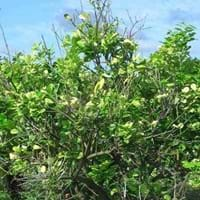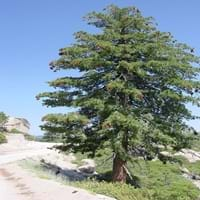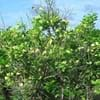Life Span
Perennial
Perennial
Type
Fruit
Needled or Scaled Evergreen
Origin
Southeastern Asia
Western United States, Canada
Types
Not Available
Not Available
Habitat
Deep, gardens, old gardens, Well Drained
Woodland Garden Canopy
USDA Hardiness Zone
9-11
Not Available
Sunset Zone
H1, H2, 8, 9, 12, 13, 14, 15, 16, 17, 18, 19, 20, 21, 22, 23, 24
Not Available
Habit
Oval or Rounded
Oval or Rounded
Flower Color
White
Non Flowering Plant
Flower Color Modifier
Bicolor
Bicolor
Fruit Color
Yellow, Green, Yellow green
Brown, Sandy Brown
Leaf Color in Spring
Green
Not Available
Leaf Color in Summer
Green
Not Available
Leaf Color in Fall
Green
Not Available
Leaf Color in Winter
Light Green
Not Available
Leaf Shape
Ovate
Needle like
Plant Season
Spring, Summer, Fall
Spring, Summer, Fall, Winter
Sunlight
Full Sun, Partial Sun
Full Sun
Type of Soil
Loam, Sand
Loam
The pH of Soil
Acidic, Neutral
Acidic, Neutral
Soil Drainage
Well drained
Well drained
Bloom Time
Spring, Late Spring, Early Summer, Summer, Late Summer, Early Fall
Not Available
Tolerances
Drought
Drought
Where to Plant?
Ground
Ground
How to Plant?
Seedlings
Cuttings, Seedlings
Plant Maintenance
Medium
Medium
Watering Requirements
Average Water Needs, Water Deeply
Water three times weekly in summer
In Summer
Lots of watering
Lots of watering
In Spring
Moderate
Moderate
In Winter
Average Water
Average Water
Soil pH
Acidic, Neutral
Acidic, Neutral
Soil Type
Loam, Sand
Loam
Soil Drainage Capacity
Well drained
Well drained
Sun Exposure
Full Sun, Partial Sun
Full Sun
Pruning
Prune for shortening long shoots, Remove damaged leaves, Remove dead branches, Remove dead leaves, Thinning
Remove damaged leaves, Remove dead branches, Remove dead leaves
Fertilizers
Apply N-P-K, can go long without fertilizers
27-3-3 ratio, Requires high amount of nitrogen
Pests and Diseases
Armored scales, Fomes root rot, Mites, Red blotch
Blister Rust
Plant Tolerance
Cold climate, Drought, Heat And Humidity
Drought
Flowers
Insignificant
None
Flower Petal Number
Single
Single
Fragrant Bark/Stem
Yes
No
Foliage Texture
Medium
Not Available
Foliage Sheen
Glossy
Glossy
Attracts
Birds, Butterflies
Douglas squirrels, Owls
Allergy
Not Available
Skin irritation
Aesthetic Uses
Bonsai
Not Used For Aesthetic Purpose
Beauty Benefits
Not Available
Not Available
Environmental Uses
Air purification
Air purification
Medicinal Uses
Blood purifier, Digestion problems, Digestive disorders
Carminative, Laxative, Opthalmic, Poultice
Part of Plant Used
Fruits, Leaves
Seeds, Wood
Other Uses
Making Shampoo, Used as insect repellent
Adhesive, Used as a chewing gum, Used for making green dye, Vanillin flavouring is obtained as a by-product
Used As Indoor Plant
No
No
Used As Outdoor Plant
Yes
Yes
Garden Design
Container, Edible, Fruit / Fruit Tree, Hedges, Mixed Border
Feature Plant
Botanical Name
CITRUS hystrix
PINUS lambertiana
Common Name
Kaffir Lime, Makrut
Sugar pine, Sugar cone pine
In Hindi
काफ़िर लाइम
Sugar Pine
In German
Kaffernlimette
Sugar Pine
In French
combava
Sugar Pine
In Spanish
cafre
Sugar Pine
In Greek
Καφρός Lime
Sugar Pine
In Portuguese
Kaffir Lime
Sugar Pine
In Polish
kaffir wapno
Sugar Pine
In Latin
Cafres Lime
Pinus
Phylum
Tracheophyta
Coniferophyta
Class
Magnoliopsida
Pinopsida
Clade
Angiosperms, Eudicots, Rosids
Not Available
Tribe
Not Available
Not Available
Subfamily
Not Available
Pinoideae
Number of Species
Not Available
Not Available
Difference Between Kaffir Lime and Sugar Pine
If you are confused whether Kaffir Lime or Sugar Pine are same, here are some features about those plants to help you choose better. Many people think that these two plants have the same characteristics, but one can see Kaffir Lime and Sugar Pine Information and learn more about it. Fertilizers required for proper growth of Kaffir Lime are Apply N-P-K and can go long without fertilizers, whereas for Sugar Pine fertilizers required are 27-3-3 ratio and Requires high amount of nitrogen. Hence, one should know the basic difference between Kaffir Lime and Sugar Pine if you are planning to have them in your garden to enhance its beauty.
<
Flowering PlantsImportance of Kaffir Lime and Sugar Pine
Want to have the most appropriate plant for your garden? You might want to know the importance of Kaffir Lime and Sugar Pine. Basically, these two plants vary in many aspects. Compare Kaffir Lime and Sugar Pine as they differ in many characteristics such as their life, care, benefits, facts, etc. Every gardener must at least have the slightest clue about the plants he wants to plant in his garden. Compare their benefits, which differ in many ways like facts and uses. The medicinal use of Kaffir Lime is Blood purifier, Digestion problems and Digestive disorders whereas of Sugar Pine is Carminative, Laxative, Opthalmic and Poultice. Kaffir Lime has beauty benefits as follows: Not Available while Sugar Pine has beauty benefits as follows: Not Available.
Compare Facts of Kaffir Lime vs Sugar Pine
How to choose the best garden plant for your garden depending upon its facts? Here garden plant comparison will help you to solve this query. Compare the facts of Kaffir Lime vs Sugar Pine and know which one to choose. As garden plants have benefits and other uses, allergy is also a major drawback of plants for some people. Allergic reactions of Kaffir Lime are Not Available whereas of Sugar Pine have Skin irritation respectively. Having a fruit bearing plant in your garden can be a plus point of your garden. Kaffir Lime has showy fruits and Sugar Pine has showy fruits. Also Kaffir Lime is not flowering and Sugar Pine is not flowering . You can compare Kaffir Lime and Sugar Pine facts and facts of other plants too.





